Canopic Jars: Funerary Tradition Of Ancient Egyptians And Their Beliefs In Afterlife
A. Sutherland - AncientPages.com - Ancient Egyptians sincerely believed in the afterlife, and a complex ritual set of burial customs was necessary to ensure an afterlife.
Mummification was an essential part of this ritual. All vital internal organs had to accompany the deceased to the underworld to be reborn. However, the dead's heart was never among the organs chosen for preservation in canopic jars.
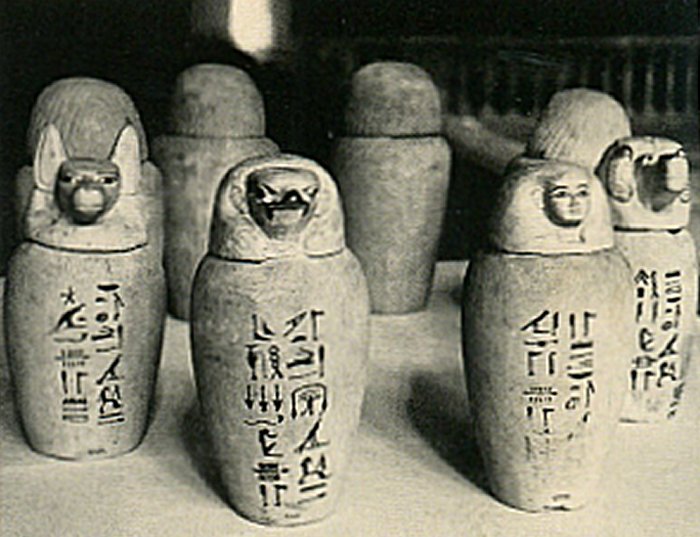 Limestone canopic jars with the heads of Qebesenuef, Duamutef, Hapy, Imsety. Originally these jars were decorated with human heads. Image credit: Egyptian Museum, Cairo
Limestone canopic jars with the heads of Qebesenuef, Duamutef, Hapy, Imsety. Originally these jars were decorated with human heads. Image credit: Egyptian Museum, Cairo
According to Egyptian beliefs, this precious organ was the source of wisdom and the seat of memory and emotions of the human being.
Therefore the heart was always left inside the mummified corpse for use in the afterlife. Canopic jars were ritual vessels containing internal organs removed from the deceased's body during mummification.
Their name, "canopies," comes from Canopus, an ancient Egyptian city in the Nile Delta, where they were first discovered. According to Strabo, Canopus was the pilot of a ship that belonged to King Menelaus of Sparta during the Trojan War.
Ancient legend says Canopus received a fatal snake bite during his stay on the Egyptian coast. In the vicinity of this tragic place, king Menelaus had erected a temple dedicated to Canopus, and a city of Canopus developed around this place.
Canopic jars of Tutankhamun; 1333–1323 BC; alabaster; total height: 85.5 cm; Egyptian Museum (Cairo). Jon Bodsworth - http://www.egyptarchive.co.uk/html/cairo_museum_49.html - Copyrighted free use
The canopies were usually made of calcite (alabaster), wood, limestone, and sometimes ceramic and earthenware. Four canopies were always placed in the burial chamber near the coffin.
Each canopy protected a different organ.
Clay canopies with flat covers and only sometimes covered with texts were already known during the Old Kingdom.
Later, in the Middle Kingdom, they were adorned with human heads.
In 1320-1085 BC (the Ramesside Period) and during the 19th and 20th dynasties, the canopies were adorned with the heads of four Horus sons. They were the guardians of the intestines of the deceased.
Canopic jars of Ruiu; 1504–1447 BC; painted pottery; Metropolitan Museum of Art (New York City). Image credit: English: Rogers Fund, 1935 - CC0 1.0
These four gods were the baboon-headed Hapy, who guarded the lungs (protected by Nephthys). The human-headed Imsety guarded the liver (and who was himself guarded by Isis); the jackal-headed Duamutef guarded the stomach (often protected by Neith); and the falcon-headed Qebesenuef, guardian of the intestines (who was often protected by Serket).
The earliest reference to these four gods can be found in the "Pyramid Texts." They were the children and, simultaneously, the "souls" of Horus and the "friends of the king." They assisted the deceased monarch in his journey to the sky ("Pyramid Texts").
Jean-François Champollion, a French scholar, philologist, and orientalist, deciphered Egyptian hieroglyphs. He contributed much to our knowledge about ancient Egypt and the jars linked to the funerary cult of ancient Egypt.
Written by – A. Sutherland AncientPages.com Staff Writer
Updated on January 21, 2023
Copyright © AncientPages.com All rights reserved. This material may not be published, broadcast, rewritten or redistributed in whole or part without the express written permission of AncientPages.com
Expand for referencesReferences:
Erman A. A Handbook of Egyptian Religion
Colin Macfarquhar C. Gleig G. Encyclopædia Britannica: Or, A Dictionary of Arts ..., Volym 4
More From Ancient Pages
-
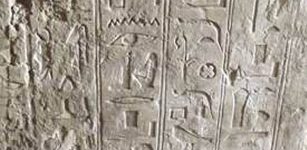 Tomb of the 26th dynasty vizier of Upper Egypt discovered in South Assassif, Luxor
Civilizations | Aug 31, 2015
Tomb of the 26th dynasty vizier of Upper Egypt discovered in South Assassif, Luxor
Civilizations | Aug 31, 2015 -
 Fall Equinox Explains Unusual Alignment Of Egypt’s Great Pyramids – Engineer Says
Archaeology | Feb 26, 2018
Fall Equinox Explains Unusual Alignment Of Egypt’s Great Pyramids – Engineer Says
Archaeology | Feb 26, 2018 -
 Ancient DNA Study Reveals Surprise About Britain’s Bronze Age – What Happened On The Orkney Islands?
DNA | Mar 31, 2022
Ancient DNA Study Reveals Surprise About Britain’s Bronze Age – What Happened On The Orkney Islands?
DNA | Mar 31, 2022 -
 Geological Mystery Of The Lost Continent Argoland Solved
Earth Changes | Oct 26, 2023
Geological Mystery Of The Lost Continent Argoland Solved
Earth Changes | Oct 26, 2023 -
 Florida’s Ancient Underwater Burial Site Much Older Than Previously Thought
Archaeology | Jun 24, 2019
Florida’s Ancient Underwater Burial Site Much Older Than Previously Thought
Archaeology | Jun 24, 2019 -
 Megalithic Giant Tripolye ‘Mega-Structures’ In Large Settlements That Collapsed Around 3650 BC
Archaeology | Oct 1, 2019
Megalithic Giant Tripolye ‘Mega-Structures’ In Large Settlements That Collapsed Around 3650 BC
Archaeology | Oct 1, 2019 -
 Prometheus ‘Fire Bringer’ – Hero Stealing Fire From Gods Giving It To Mortals
Featured Stories | Sep 5, 2018
Prometheus ‘Fire Bringer’ – Hero Stealing Fire From Gods Giving It To Mortals
Featured Stories | Sep 5, 2018 -
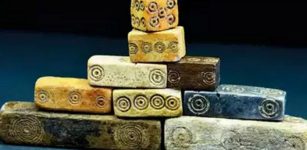 Millennium Old Dice Found In Vadnagar, Gujarat, India
Archaeology | Apr 25, 2022
Millennium Old Dice Found In Vadnagar, Gujarat, India
Archaeology | Apr 25, 2022 -
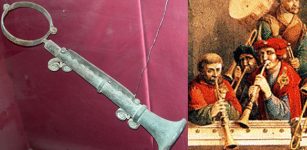 What Was The Medieval Shame Flute?
Ancient History Facts | Jan 27, 2020
What Was The Medieval Shame Flute?
Ancient History Facts | Jan 27, 2020 -
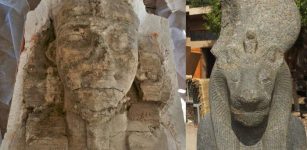 Two Giant Limestone Sphinxes Of Pharaoh Amenhotep III And A Statue Of Goddess Sekhmet Discovered In Luxor
Archaeology | Aug 11, 2022
Two Giant Limestone Sphinxes Of Pharaoh Amenhotep III And A Statue Of Goddess Sekhmet Discovered In Luxor
Archaeology | Aug 11, 2022 -
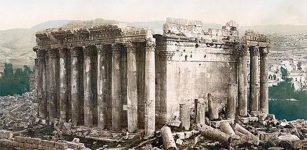 Baalbek: Were The Megaliths Put In Place Under Herod?
Archaeology | May 27, 2019
Baalbek: Were The Megaliths Put In Place Under Herod?
Archaeology | May 27, 2019 -
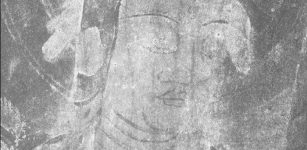 1,300-Year-Old Paintings Depicting Eight Buddhist Saints Revealed By Infrared Cameras
News | Oct 1, 2020
1,300-Year-Old Paintings Depicting Eight Buddhist Saints Revealed By Infrared Cameras
News | Oct 1, 2020 -
 Unique Bronze Age Fortress Discovered In Galway, Ireland
Archaeology | Jun 25, 2022
Unique Bronze Age Fortress Discovered In Galway, Ireland
Archaeology | Jun 25, 2022 -
 Tomoe Gozen’s Bravery And Strength, Embodiment Of A True Female Samurai
Featured Stories | Oct 16, 2018
Tomoe Gozen’s Bravery And Strength, Embodiment Of A True Female Samurai
Featured Stories | Oct 16, 2018 -
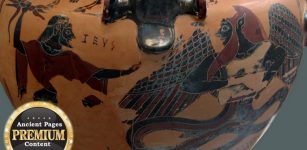 Mysterious Shape-Shifting Beings In Ancient Greece
Ancient Mysteries | Nov 12, 2014
Mysterious Shape-Shifting Beings In Ancient Greece
Ancient Mysteries | Nov 12, 2014 -
 Unkulunkulu: ‘Great Oldest One’ Progenitor Of Mankind, Creator Of All Things And Origin Of Death In Beliefs Of Zulu People
African Mythology | Sep 30, 2019
Unkulunkulu: ‘Great Oldest One’ Progenitor Of Mankind, Creator Of All Things And Origin Of Death In Beliefs Of Zulu People
African Mythology | Sep 30, 2019 -
 Curious Historical Observation Of A Bronze Age Warrior Who Shouldn’t Exist
Featured Stories | May 21, 2019
Curious Historical Observation Of A Bronze Age Warrior Who Shouldn’t Exist
Featured Stories | May 21, 2019 -
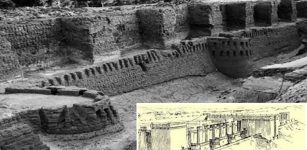 Massive Fortress Buhen In Ancient Capital Of Egyptian Nubia
Archaeology | Mar 20, 2017
Massive Fortress Buhen In Ancient Capital Of Egyptian Nubia
Archaeology | Mar 20, 2017 -
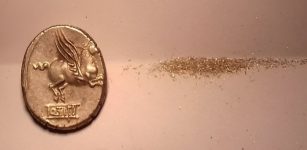 Romans Were Early Pioneers Of Recycling – New Evidence Reveals
Archaeology | Oct 17, 2023
Romans Were Early Pioneers Of Recycling – New Evidence Reveals
Archaeology | Oct 17, 2023 -
 Ancient Burial Site Flagstones In Dorset Is Older Than Stonehenge
Archaeology | Mar 7, 2025
Ancient Burial Site Flagstones In Dorset Is Older Than Stonehenge
Archaeology | Mar 7, 2025


